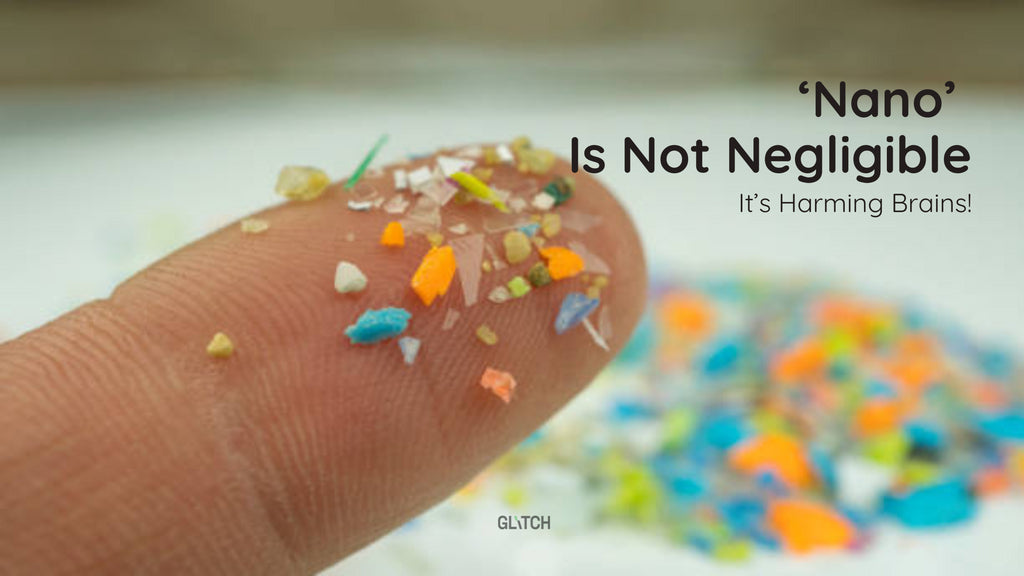Nanoplastics Got into My Brain

Scientists have found nanoplastics lodged in the human brain, with levels up to 30 times higher than in the kidney and liver—the equivalent of an entire plastic spoon inside your head. (CNN) These microscopic particles, shed from everyday plastic products, are infiltrating our bodies in ways we never imagined—through the air we breathe, the water we drink, and even the clothes we wear.
I have really grown up studying about it. Environment studies was my favourite subject. Pollution actually frightened me as a kid. Realising, for years we’ve been warned about plastic pollution choking our ecosystem. But now I think it’s in us. According to biological studies, tiny yet terrifying nanoplastics can cross biological barriers, entering our bloodstream, tissues, and even the brain. And while they may be nano in size, they are far from negligible in impact.
Let me briefly take you through what nanoplastics are.
Nanoplastics are plastic particles smaller than 1,000 nanometers (nm) in diameter—so tiny that they can penetrate biological barriers and enter human tissues. They result from the degradation of larger plastic items. Given their minute size, nanoplastics can accumulate in human tissues, potentially leading to adverse health effects.
The Ubiquity of Nanoplastics
Recent studies have highlighted the pervasive presence of nanoplastics in our environment and bodies. Research published in Nature Medicine 2025 found significant amounts of microplastics and nanoplastics in the human brain, specifically in the prefrontal cortex. The study revealed that brain samples contained seven to 30 times more plastics than kidney and liver samples, with the average amount equivalent to a plastic spoon. Most plastic particles were nano-sized polyethylene shards used in plastic bags, wraps and water bottles. While research is still ongoing, scientists suspect that chronic exposure to nanoplastics could contribute to neuroinflammation, cognitive decline, and even neurological disorders.
Where Are These Plastics Coming From?
Now, after extensively researching the latest materials, I see that everyday plastic items we use are breaking down into nanoparticles, infiltrating our lives through:
🔹Water and Food – Bottled water contains up to 240,000 plastic particles per liter, as proven by recent research. Fish and seafood, especially shrimp, are highly contaminated with microplastics. This made me think—why wouldn’t they be? I’ve always seen plastic floating in my favorite beach spots.
🔹 Air – Airborne nanoplastics settle into our homes, inhaled with every breath. A recent study found over 74,000 microplastic particles in household dust per person, annually.
🔹 Clothing and Fashion – This one gave me chills. The fashion industry is a hidden plastic polluter, with synthetic fibers like polyester, nylon, and acrylic shedding microplastics every time we wash our clothes. Packaging, labels, and tags add even more plastic exposure.
The Fashion Industry’s Plastic Problem
Not to hide, but now, being a part of the fashion market, I can openly say that fast fashion thrives on plastic. Over 60% of clothing materials are synthetic, derived from petroleum-based plastics. When these clothes are washed, they release tiny plastic fibers into wastewater systems, ultimately contaminating oceans and food chains.
I was not shocked to see that in 2019 alone, the fashion industry generated 8.3 million tons of plastic waste—about 14% of global plastic pollution. Beyond the garments themselves, the industry relies heavily on plastic packaging, polybags, and non-biodegradable tags, further increasing consumer exposure to nanoplastics.
Considering and learning about this, I felt it was high time to bring attention to it. Here’s what we at Glitch are doing to cut plastic out:
The term Glitch itself meant to stand solid against any practice that doesn’t come at the planet’s expense. We refuse to be a part of the problem. That’s why we’re actively working to reduce plastic from every stage of our production process:
✅ Sourcing Plastic-Free Fabrics – We prioritize organic, natural, and biodegradable materials over synthetic, microplastic-shedding fabrics.
✅ Eco-Friendly Stitching & Manufacturing – We avoid chemical-heavy production processes that contribute to plastic pollution.
✅ Plastic-Free Packaging – No polybags, no plastic-coated tags—just recycled paper, honeycomb biodegradable packaging we picked.
The Nano Yet Significant Acts That Matter
I know eliminating plastic completely isn’t easy. But waiting for someone to do something big is not a perfect solution. After all, every nono step matters. Every conscious step, from choosing plastic-free materials to rethinking packaging is a small yet powerful act of resistance against a plastic-drenched world.
The future of fashion isn’t just about aesthetics, it’s equivalently about comfort and accountability. Nanoplastics may be invisible, but the damage they cause is crystal clear.
It’s time we rethink where plastic stands in each of our lives. At Glitch, we are. Will you?
Let us all learn and do a nano part of protecting ourselves and nature.

